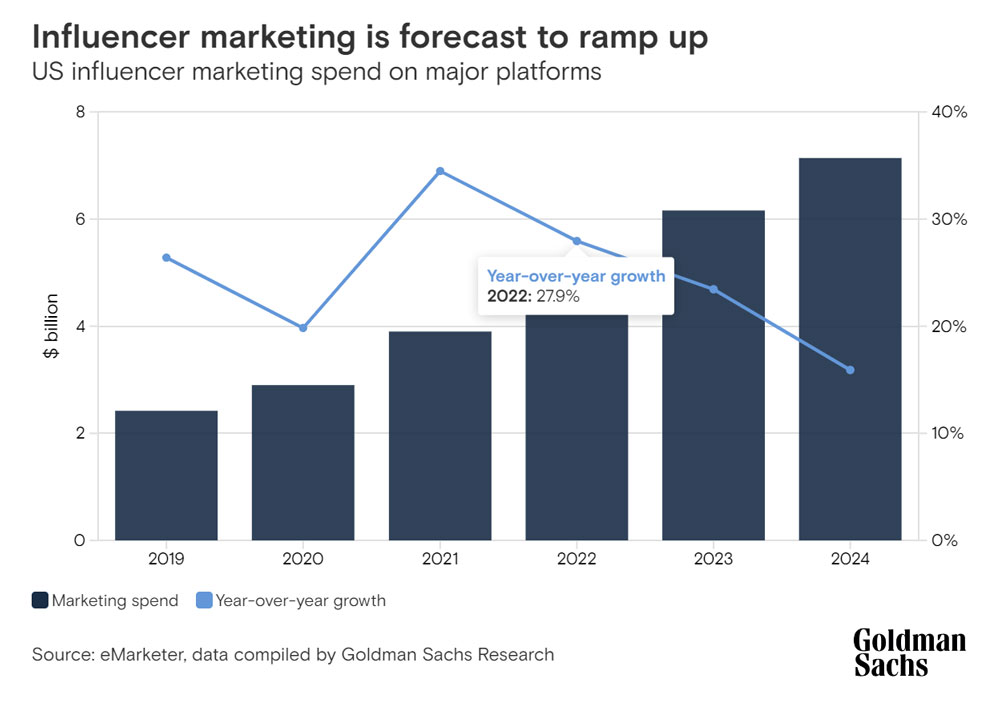
Is the Creator Economy Good? Yes, and Here’s Why
Is the creator economy good? The creator economy has no doubt brought about significant good changes. Brands are reaping substantial profits through influencer marketing, and it has injected liquid money into the job market, providing opportunities for those previously struggling to find traditional employment. Having personally faced the hurdles of underemployment and freelancing, I can vouch for how the creator economy has provided me with opportunities to use my skills, unlike traditional workplaces where nepotism often overshadowed my hard work.
Why is the Creator Economy Good?
The rise of platforms like Instagram has turned content creation into a lucrative business, attracting a wave of aspiring creators. While it has boosted income and job prospects, questions linger about its long-term impact on traditional employment. As the next generation increasingly recognizes the potential for higher earnings and greater fulfillment in content creation, a growing number of individuals are turning to this path. They’re drawn by the allure of increased financial prospects and a more satisfying way of pursuing their careers.
This trend, particularly among Gen Z, highlights a significant shift in the workforce, driven by emerging platforms, decentralization, and an expanding array of incentivizing tools. Consequently, it is changing how people approach their careers, exercise control over their content, and ultimately secure their financial futures.
Table of Contents
The Creator Economy in Numbers
The creator economy has witnessed explosive growth in recent years. According to venture capital firm SignalFire, nearly 50 million people now consider themselves part of this thriving ecosystem. What’s more, some estimates place the worth of the creator economy at a staggering $104.2 billion as of mid-2022, with contributions rivaling or surpassing traditional industries like agriculture or transportation. It is expected to be worth $200 billion in 2024, according to Forbes and $500 billion according to Goldman Sachs Research by 2027.
This rapid expansion is fueled by several converging factors, including technological advancements, economic shifts, and changing generational preferences.

Technology: Democratizing Creative Industries
Technological innovation plays a pivotal role in democratizing creative industries once controlled by a select few. Historically, music labels, book publishers, production studios, and media giants held sway over content creators and their earnings. However, the internet and digital tools have changed all these.
Creator marketplaces, social media platforms, content-creation tools, and efficient payment processors now allow creators to connect directly with their audiences. This newfound control over their work, both financially and creatively, empowers creators to forge their own paths.
One significant challenge faced by creators, especially freelancers, is timely payment for their work. Traditional payment methods, like the Automated Clearing House (ACH) Network, can take several days to transfer funds, a delay that can strain those who rely on steady income.nnThe close bond between creators and their fans is poised to bridge even further, as fans gain the opportunity to acquire shares of the creators directly within the platform. This emerging trend, known as “creator equity” and “fanvesting,” is expected to solidify its presence by the end of 2024 with the introduction of Creator Share Offerings.nnThere are already projects doing this:
A social network that allows users to buy and sell tokens that represent the social clout of public figures, such as celebrities, influencers, and creators.
A platform that enables creators to launch their own digital currency and reward their fans for engaging with their content.
A network that allows creators to create their own social tokens and build communities around them.
Republik is a social media platform that rewards users for interacting online, whether they are content creators or viewers.
A decentralized social platform that offers fractionalized shares on both content royalty and creator shares.
Economic Shifts: Rise of Independent Workers
Economic crises, such as the 2008 Great Recession and the COVID-19 pandemic, changed the workforce. Many individuals turned to gig work and freelancing as independent contractors, either by necessity or choice. The gig economy emerged as a vital source of income and personal empowerment.
In fact, experts predict that freelancers could comprise half of the workforce by 2030. Creators, with their diverse skills and creative talents, are at the forefront of this transformation.
Generational Shifts: Embracing Self-Employment
Millennials, Generation Z, and the coming of Gen Alpha are welcoming self-employment and entrepreneurship. They are comfortable with the digital tools and platforms that underpin the creator economy. In 2022, 43% of Gen-Z professionals and 46% of Millennial workers engaged in freelance work, according to Upwork.
These generations value connections with individual personalities more than traditional publisher brands, driving the demand for diverse, unique, and personalized content.
The Benefits and Challenges for Creators
Being part of the creator economy offers creators a host of benefits, including autonomy over working hours, opportunities to build communities, and the ability to create multiple revenue streams. However, it’s not without its challenges. Creators often grapple with unpredictable income, the risk of intellectual property theft, reliance on third-party platforms for content distribution, and evolving regulatory environments.
Inequality in the Creator Economy
While the creator economy is thriving, the distribution of economic rewards within it is uneven. A small percentage of creators, such as YouTube’s MrBeast and TikTok’s Khaby Lame, earn substantial incomes, while the majority earn modest amounts. Just 1.4% of creators make over $1 million annually, while two-thirds earn less than $25,000. [Source]
Creating a Sustainable Creator Middle Class
A significant challenge within the creator economy lies in enabling a more substantial and self-sustaining “middle class” of creators. The existing digital platforms, due to their massive scale, often operate within algorithms that prioritize established creators, making it increasingly difficult for newcomers to gain visibility. This dynamic tends to perpetuate the success of the already prominent, leaving little room for smaller creators to thrive.
The solution lies in the evolution of social networks, where new platforms arise with each generation. These platforms provide fresh opportunities for creators to grow their presence and income, avoiding the saturation and celebrity-focused nature of more established platforms like Instagram and TikTok. In this context, Web 3 and the SocialFi space are poised to change the industry.
Web 3 technologies offer creators greater control over their content and income streams. By utilizing blockchain technology and decentralized platforms, creators can secure more equitable compensation for their work, circumventing the traditional gatekeepers that often hinder their growth. This newfound control allows middle-class content creators to not only survive but also thrive as they navigate their path to market more efficiently.
Moreover, the reduced financial risks associated with Web 3 and SocialFi enable upcoming creators to develop their brand while simultaneously pursuing other forms of employment, making it a more accessible and sustainable journey.
The Future of the Creator Economy
The creator economy’s growth shows no signs of slowing down. As more individuals contribute to this space, we can expect further innovation and disruption of traditional industries. New platforms, technologies, and business models will enable creators to monetize their work and connect with global audiences.
To learn more about the Future of the Creator Economy in my blog below about:

Think about this for a moment: it is estimated that by 2025, the creator economy will be worth $104.2 billion, skyrocketing from its $9.7 billion value in 2018. But how exactly will this unprecedented growth unfold? n What is the future of the creator economy? n The future of the creator economy is anticipated to…

What is Social Fi? n Social Fi, an abbreviation for Social Finance or Social Decentralized Finance, signifies a pivotal shift within the social media space. At its core, it empowers users by making certain that the money they earn on these platforms remains firmly under their control, liberated from the dominion of centralized big tech…





Leave a Reply